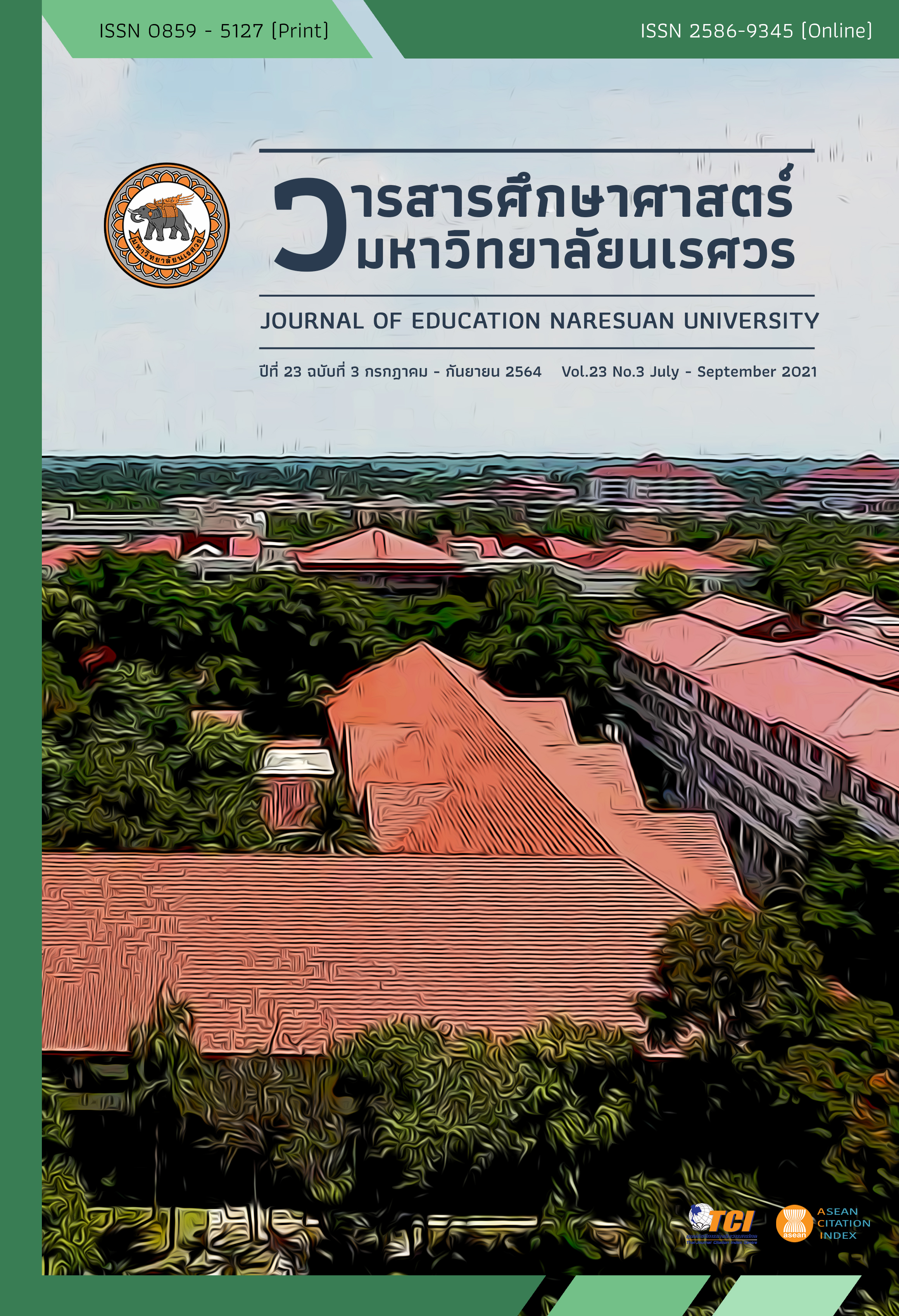DEVELOPMENT OF MEASUREMENT INSTRUMENT AND EVALUATION CRITERIA FOR INSPRING LEARNING PROCESS OF TEACHERS IN BASIC EDUCATION: AN APPLICATION OF USING LATENT CLASS ANALYSIS การพัฒนาแบบวัดและเกณฑ์การประเมินกระบวนการสร้างแรงบันดาลใจในการเรียนรู้ของครูระดับการศึกษาขั้นพื้นฐาน: การประยุกต์ใช้การวิเคราะห์กลุ่มแฝง
Main Article Content
Abstract
The purposes of this research were 1) to develop and verify the quality of measurement instrument for inspiring learning process of teachers in basic education; and 2) to analyze levels of latent class and develop evaluation criteria for inspiring learning process of teachers in basic education. The sample were 340 teachers in basic education from 6 regions in Thailand using multistage random sampling. Data were collected by measurement instrument for inspiring learning process of teachers. The data were then analyzed by content validity, discrimination, construct validity, and reliability. The research findings were as followed:
1. Measurement instrument for inspiring learning process of teachers in basic education was 5-point rating scale consisted of 7 dimensions (27 items): 1) Creating confidence in the learner (4 items), 2) Creating a learning atmosphere (5 items), 3) Creating learning motivation (4 items), 4) Awareness on the importance of learning (3 items), 5) Learning form a role model or good practice (3 items), 6) Favorite knowledge sharing (3 items), and 7) Positive reinforcement (5 items). It had content validity as examined by experts (IOC = .60 - 1.00). The discrimination ranged between .386 - .782 and reliability coefficients had .926. It also had construct validity as shown by the model fit with the empirical data (Chi-square (290, N = 340) = 329.965, p =.053, CFI = .987, TLI = .984, RMSEA = .026, SRMR = .040)
2. The analysis of latent class according to the inspiring learning process of teachers in basic education using latent class analysis. The results revealed that latent class could be divided into 4 groups as follow: 1) “Group of teacher which inspired at the beginning” (M = 3.201 – 3.500, SD = 0.284 - 0.530), 2) “Group of teacher which inspired in practicing level” (M = 3.857 – 3.918, SD = 0.388 - 0.588), 3) “Group of teacher which inspired in professional level” (M = 4.184 – 4.292, SD = 0.382 - 0.622), and 4) “Group of teacher which inspired in master level” (M = 4.663 – 4.807, SD = 0.287 - 0.364) and evaluation criteria that use the intersection of standard T scores. the values are as follows: (T = 40, M = 3.520 – 3.620; T = 50, M = 4.065 – 4.139; T = 60, M = 4.562 – 4.682)
Article Details
The owner of the article does not copy or violate any of its copyright. If any copyright infringement occurs or prosecution, in any case, the Editorial Board is not involved in all the rights to the owner of the article to be performed.
References
Block, L., Jesness, R., & Schools, M. P. (2013). One-to-one learning with iPads: Planning & evaluation of teacher professional development. College of Education, Leadership & Counseling. University of ST. Thomas Minnesota.
Bodner, G. M. (1986). Constructivism: A theory of knowledge. Journal of Chemical Education, 63(1), 873-878.
Bruning, R., Schraw, B., Norby, M., & Ronning, R. R. (2004). Cognitive psychology and instruction (4th ed.). Upper Saddle River, New Jersey: Pearson Education.
Chan, J. C. Y., & Lam, S. F. (2008). Effects of competition on students' self-efficacy in vicarious learning. British Journal of Educational Psychology, 78(1), 95-108.
Chou, C. C., Block, L., & Jesness, R. (2012). A case study of mobile learning pilot project in K-12 schools. Journal of Educational Technology Development and Exchange, 5(2), 11-26.
Educational Discovery Tours. (2018). How do teachers inspire students. Retrieved from https://educationaldiscoverytours.com/how-do-teachers-inspirestudents
Hair, J. F., Anderson, R. E., Babin, B. J., & Black, W. C. (2010). Multivariate data analysis: A global perspective. Upper Saddle River, NJ: Pearson.
Halawah, I. (2011). Student's motivation to learn from students' perspective. Education, 132(2), 379-390.
Michael, B., Churches, R., Gowers, F., Mackenzie, N., McCauley, D., & Pye, M. (2016). Inspiring Teachers: How teachers inspire learners. Retrieved from https://www.educationdevelopmenttrust.com/~/media/EDT/Reports/Research/2016/r-Inspiring-Teachers-How-Teachers-Inspire-Learners-2016.pdf
Nithikitsookkasem, P., & Wingwon, B. (2018). Model entrepreneurial intentions of students vocational in education for enterprise incubator project. Journal of Business Administration The Association of Private Higher Education Institutions of Thailand, 7(1), 146-161. [in Thai]
Panich, V. (2012). Learning strategies for student in 21st century. Bangkok: Sodsri-Saritwong Foundation. [in Thai]
Praneetham, C. (2017). Inspiration of public mind for sustainable tourism. Panyapiwat Journal, 9(1), 254-264. [in Thai]
Roth, J. (2020). Inspiring learning and teaching of functional thinking by experiments with real and digital materials. Proceedings of the 14th International Conference on Technology in Mathematics Teaching – ICTMT 14 (pp. 46-58). DOI:10.17185/duepublico/70739
Viphoouparakhot, V., Buranaphan, P., & Tienkhaw, S. (2019). Inspiration in creative learning management and student engagement in graduate studies. The 14th Proceeding, Inspiring Student Learning for Diverse Societies (pp. 26-36). Bangkok: Ambassador Hotel Bangkok. [in Thai]


